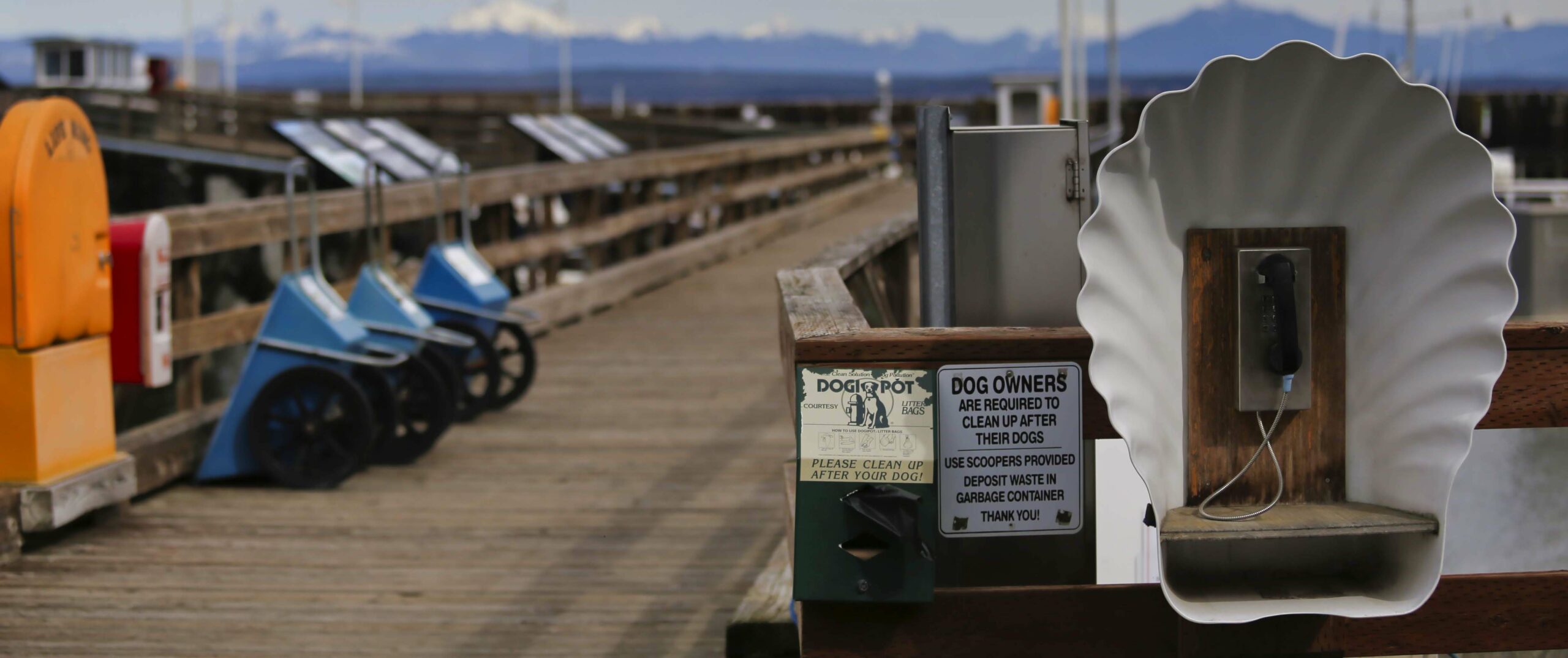If you’ve ever tried to answer an email or surf the web from your mobile device in public, chances are you connected to a WiFi hotspot. Not only is this connection highly convenient, you also didn’t have to use your smartphone’s data. Not surprisingly, public WiFi hotspots are becoming an essential part of public infrastructure—especially during the COVID-19 pandemic.
WiFi hotspots are public internet access points (spots) that allow you to connect to a WiFi network using your computer, smartphone or other wireless device. The range, power, speed and price of a WiFi hotspot may vary, based on where you are.
Our Customer Center in Freeland, for example, is a public WiFi hotspot. We’ve recently extended the reach to cover the parking lot out front, so you can access our WiFi network from the safety of your vehicle. You can also find our WiFi hotspots at the Port of South Whidbey or Langley City Hall.
Click here for a map of all Whidbey Telecom public WiFi hotspots.
WiFi vs Wireless
Many people use the terms WiFi and wireless interchangeably. Wireless and WiFi are the same in that they both allow devices to connect to the internet without a cable. The difference is in the way they connect.
WiFi technology uses radio signals to send and receive data between your device and the access point, or router. The range of a WiFi connection is limited to the location of the WiFi router, such as your home or a cafe.
Wireless service is what you purchase with your cell phone. A cellular wireless device connects to cell towers to provide internet connectivity. This means you can use a wireless connection anywhere you can use a cell phone.
However, data usage can get very expensive, very quickly. Many cellular carriers only allow a few gigabytes of data per month. If you exceed your data limit, you may be subject to some hefty overage charges. Because of this, most users often rely on fixed WiFi networks whenever possible. A 2017 US Telecom Study found that over three-fourths of all smart phone data usage is over WiFi networks—not cellular signals.
Fixed vs Mobile
A fixed hotspot is created by a WiFi router connected to a stationary (fixed) connection. These connections are often over fiber-optics, copper, or cable. Restaurants, libraries, airports, hotels and even your business office are all places you’d typically find a fixed WiFi hotspot. Some public hotspots require you to sign in or register to use.
A mobile (portable) hotspot is a hotspot that’s just that—mobile! While a fixed WiFi hotspot is tied to a physical location, mobile hotspots travel with you. Most smartphones have the ability to become mobile hotspots, extending your cellular service to other devices. Be aware, however, that tethering your laptop or tablet to your phone will use your phone’s data allowance and you may incur overage fees.
You can also buy standalone mobile WiFi devices from cellular stores like Verizon or T-Mobile. These are ideal if you travel a lot for work and need constant access to reliable WiFi. It’s important to remember that these function like your cell phone, in that they utilize data plans and may come with overage costs. While this kind of internet connection makes sense in some circumstances, it’s more expensive than a fixed setup.
Public WiFi hotspots in coffee shops, libraries, and other public places are convenient, but not always secure. To protect your personal information, the Federal Trade Commission (FTC) recommends that you send information only to sites that are fully encrypted. Avoid using mobile apps that require personal or financial information.
